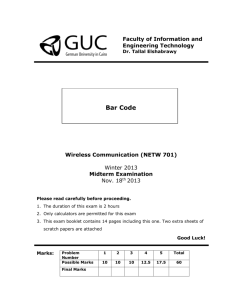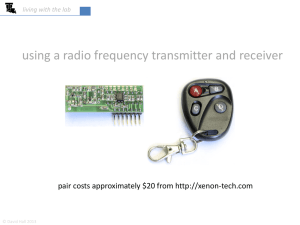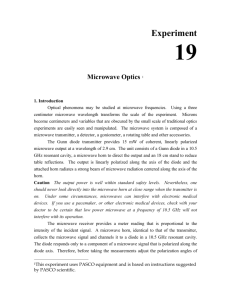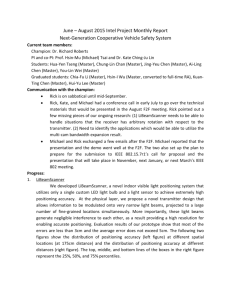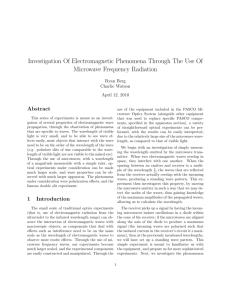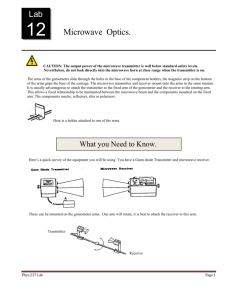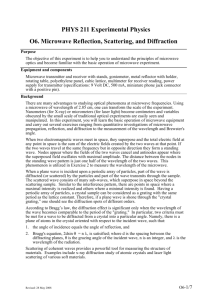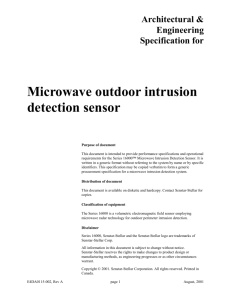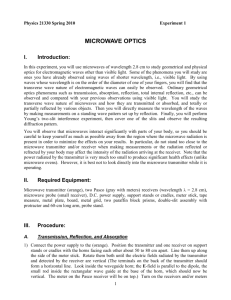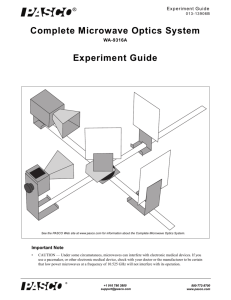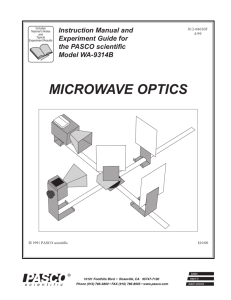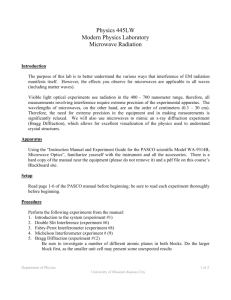Polarization (Microwave Optics)
advertisement
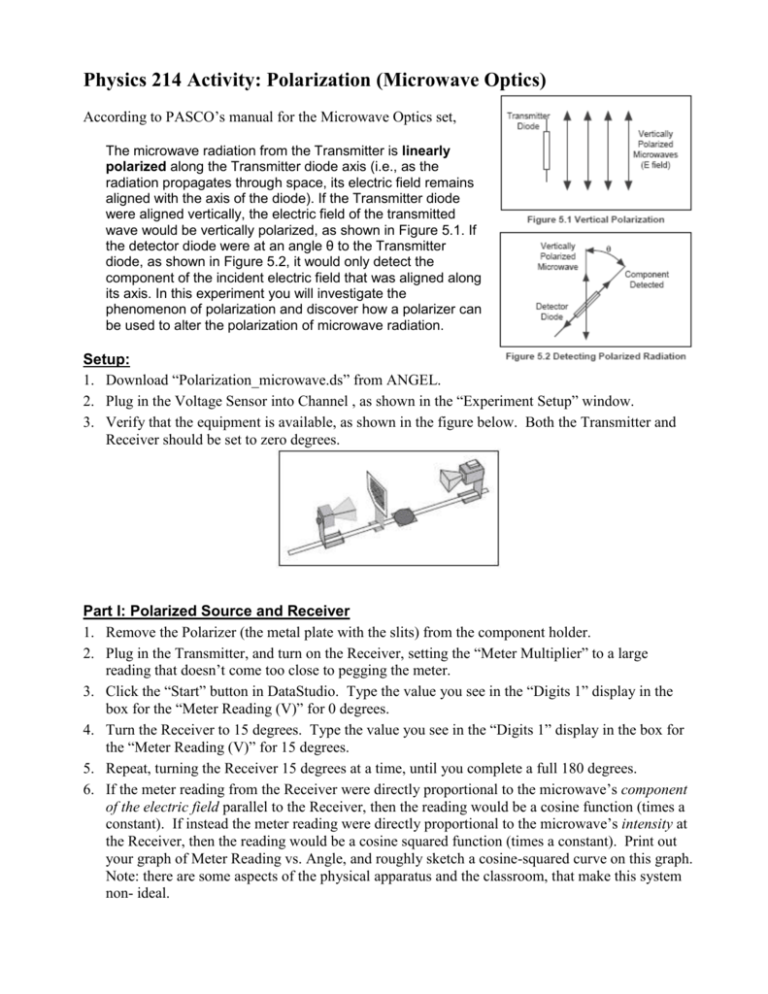
Physics 214 Activity: Polarization (Microwave Optics) According to PASCO’s manual for the Microwave Optics set, The microwave radiation from the Transmitter is linearly polarized along the Transmitter diode axis (i.e., as the radiation propagates through space, its electric field remains aligned with the axis of the diode). If the Transmitter diode were aligned vertically, the electric field of the transmitted wave would be vertically polarized, as shown in Figure 5.1. If the detector diode were at an angle θ to the Transmitter diode, as shown in Figure 5.2, it would only detect the component of the incident electric field that was aligned along its axis. In this experiment you will investigate the phenomenon of polarization and discover how a polarizer can be used to alter the polarization of microwave radiation. Setup: 1. Download “Polarization_microwave.ds” from ANGEL. 2. Plug in the Voltage Sensor into Channel , as shown in the “Experiment Setup” window. 3. Verify that the equipment is available, as shown in the figure below. Both the Transmitter and Receiver should be set to zero degrees. Part I: Polarized Source and Receiver 1. Remove the Polarizer (the metal plate with the slits) from the component holder. 2. Plug in the Transmitter, and turn on the Receiver, setting the “Meter Multiplier” to a large reading that doesn’t come too close to pegging the meter. 3. Click the “Start” button in DataStudio. Type the value you see in the “Digits 1” display in the box for the “Meter Reading (V)” for 0 degrees. 4. Turn the Receiver to 15 degrees. Type the value you see in the “Digits 1” display in the box for the “Meter Reading (V)” for 15 degrees. 5. Repeat, turning the Receiver 15 degrees at a time, until you complete a full 180 degrees. 6. If the meter reading from the Receiver were directly proportional to the microwave’s component of the electric field parallel to the Receiver, then the reading would be a cosine function (times a constant). If instead the meter reading were directly proportional to the microwave’s intensity at the Receiver, then the reading would be a cosine squared function (times a constant). Print out your graph of Meter Reading vs. Angle, and roughly sketch a cosine-squared curve on this graph. Note: there are some aspects of the physical apparatus and the classroom, that make this system non- ideal. Part II: Polarizer between Polarized Source and Receiver 1. Return both the Transmitter and Receiver to zero degrees. 2. With the Transmitter and Receiver both active, hold (with your hand) the Polarizer beside the component holder. Rotate it, observing where you get maximum and minimum readings. 3. Attach the polarizer to the component holder (it’s magnetic), at a 45° angle. The easiest way to do this is to make sure the “notch” in one corner is facing down, parallel to the table top. 3. Click the “Start” button in DataStudio. Type the value you see in the “Digits 1” display in the box for the “Meter Reading (V)” for 0 degrees. 4. Repeat, as for part 1, turning the Receiver 15 degrees at a time, until you complete a full 180 degrees. 5. At what angle do you get the maximum reading? Does this make sense? Why or why not? 6. Turn the Receiver to the location where you got the maximum reading. Now remove the polarizer. Did the reading increase or decrease? Does this make sense? Why or why not? 7. With the polarizer removed, turn the Receiver to 90 degrees, and note the reading. Now insert the polarizer at 45 degrees. Did the reading increase or decrease? Does this make sense? Why or why not?


